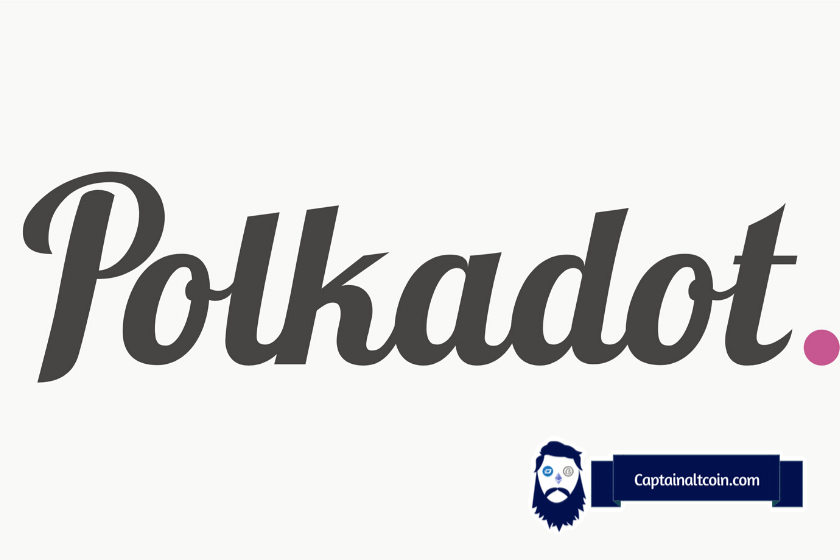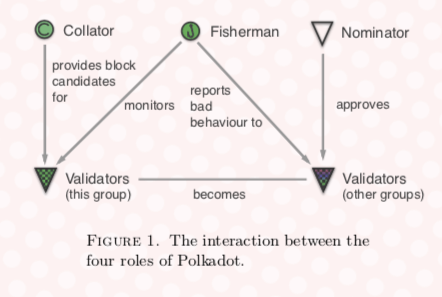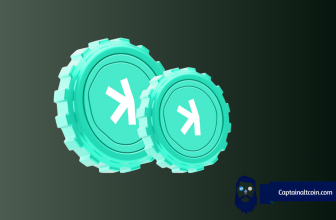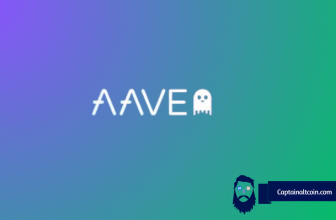
While many a blockchain project has been created so far to cover various areas of our daily existence, these projects are often times not as intertwined as we’d like them to be.
This lack of connectivity between blockchain projects can be a real problem: say you invested money into one token and would like to quickly transfer these tokens into another cryptocurrency. The number of transfers and third party intermediaries you’d have to make/contact at this point in time is simply not practical or even safe.
This is why blockchain enthusiasts and developers started working on interoperability projects. Interoperability enables us to easily share information and transact across different blockchain systems and architectures.
In a fully interoperable environment, one person can send you something from one blockchain and you will be able to read, comprehend, and interact with or respond to it with little effort and no third party involved on your own native blockchain.
Blockchain interoperability is helpful in so many ways; it lowers the entry costs of the blockchain industry (by creating a standardized environment) and at the same time raises its security bar (by making the entire network more robust).
It also helps end users as well, helping them manage their funds in a simpler, cheaper manner and ultimately making their holdings much more liquid then they are in a non-interoperable world. With all of this in mind, today we’ll be taking a closer look at Polkadot, one of the market’s more popular interoperability-focused projects.
What you'll learn 👉
Introduction
The idea for Polkadot came to mind of an individual called Gavin Wood, former CTO of Ethereum (and a man who originally proposed Solidity, Ethereum’s smart contract programming language).
Back in 2014, while still being positioned at the nowadays second most valuable cryptocurrency on the market, Wood produced a blog insight describing his vision for the upcoming Web 3.0 (a name he gave to his post-centralized idea of the internet). In this post Wood, seemingly dejected by the situation famous CIA “whistleblower” Edward Snowden found himself in, describes a need for a decentralized, pseudonymous, and trustless internet of the future which would allow information to flow freely and securely through communication channels.

Wood thought Ethereum would become the basis for this peer-to-peer internet that wouldn’t have any servers or authorities managing the transfer of data. But four years later, he found himself faced with the realization that Ethereum and the internet are still light years away from being capable of fulfilling his vision.
He realized that Web 2.0 still suffers from the problem of third party intermediaries relaying every piece of information you send online, from PayPal payments to Facebook messages. In a world where information is power this can be extremely dangerous, as only “a few cables” get to transfer and potentially control, misuse or even remove from existence most of the data exchanged between individuals.
All of this led Wood towards creating Parity, a blockchain infrastructure development company that wants to accelerate the Web 3.0 vision by delivering three key infrastructure projects: Parity Ethereum (Eth 1.0 as well as Serenity), Parity Substrate, and the Web3 Foundation’s project, Polkadot. Speaking of his gripes with Ethereum, Wood noticed one issue in particular with the proposed sharding technology that was supposed to solve Ethereum’s problems with scalability.
He felt that each of the shards would need to have the same guarantees of security, something that was diametrically opposed to original thoughts of Ethereum’s main developer, Vitalik Buterin (who felt that different shards with different levels of security were the way to go).
Further disagreements with Ethereum core development directions (explained in this episode of Epicenter podcast) was what ultimately made Wood come up with the idea of Polkadot, a system where shards were given the freedom to stay different and would allow for different shards to run different application logic.
This would essentially allow for creation of unique platforms based on different application logic for each shard that connects to the system through the central, relaying chain.
While such a structure would, by default, increase the overall complexity of this interconnected system, the solution was found in using WebAssembly, a generic and abstract machine specification that could mediate between shards that would have different runtimes.
You immediately notice how this translates onto the world of blockchain, which is chock-full of different blockchain projects running different application logic, smart contracts, governance models, using different currencies.
This is an extremely specialized environment, one in which is very difficult for each separate part to communicate directly with the rest of the market. Polkadot wants to help solve this interoperability problem by introducing what they call parachains, parallel chains that are custom-fitted to allow each real blockchain to communicate with the central relaying chain. Parachains can be written in any language but only need to have a specific function interface implemented, one that allows Polkadot to call into said parachains and relay messages.
Introducing interoperability fixes the scalability bottlenecks as well, since transactions can be ran in parallel. Some estimates suggest the throughput improvements might clock around 100x of what we have with current PoS systems. If blockchain developers were to use Substrate, Parity’s parachains building development tool, we are looking at 1,000x to 10,000x scalability compared to current PoS systems.
Substrate will represent a knowledge base containing standardized resources required to build a blockchain which developers will be able to dive into and create a blockchain to their measure (Substrate can be used to build “regular” blockchains, not just parachains for Polkadot). Finally, the blockchain safety is increased, as projects can either use their own resources to validate the chain or rely on Polkadot’s main relay chain for that.
In Depth Look
Polkadot’s central Relay Chain plays a key role in this process, operating as a hub through which the entire blockchain interoperation takes place.
The relay chain can have both public and permissioned chains connect to it, and even allow the latter ones to retain their privacy while still being able to communicate with the rest of the network. Polkadot can connect any previously existing blockchain via parachains if it matches the following criteria:
- It must have the ability to form compact and fast light-client proofs over the finality and validity of its blocks and state change information (this would include new UTXOs in a Bitcoin-like chain or logs in an Ethereum-like chain).
- There must be a means by which a large set of independent authorities (perhaps up to one thousand) can authorize a transaction. This could include recognition of threshold signatures, such as the Schnorr scheme, or a smart contract able to structure logic against a multi-signature condition.
Bitcoin and Bitcoin-like chains fall short on these characteristics. To address the first criteria, Polkadot validators can simply run a full Bitcoin node.
To address the second criteria, either a soft-fork allowing extra-protocol controls over funds or a hard-fork enabling a threshold-signature-friendly signing scheme such as Schnorr is needed. Ethereum and its child chains, on the other hand, are capable of satisfying these criteria from the get-go.
Parachains don’t have to be limited to blockchains; they can be other data structures that plug into the relay chain for pooled security and interoperability with other chains like oracle services, identity management systems, decentralized exchange order books and escrows, IoT networks etc. Alternatively, chains don’t have to create their own parachains but can instead use bridges; these act as connecting layers for blockchains that want to maintain their own state history and consensus.
The entire system employs a similar architecture to what other interoperability projects like Cosmos have in mind. Polkadot’s consensus is similar to Cosmos’ Tendermint and POA Network’s HoneyBadgerBFT, currently employing a so-called GRANDPA algorithm to ensure transaction verification and validity. Parachains process their own transactions which allows the entire system to scale, with transactions being spreadable across chains to allow for higher processing rates.
Token
DOT token is the official token of the Polkadot ecosystem. It is a utility token that has three main functions:
- Governance: DOT owners have full control over the protocol. The ecosystem has no miners and uses proof-of-stake algorithm so holders manage all exceptional events such as protocol upgrades and fixes.
- Operation: The system uses game theory and rewards those DOT owners who behave in honest ways. Cheaters will lose parts of their stake. This principle make system stays secure.
- Bonding & Payment: Tokens can be used to add new parachains or to remove non-active ones.
5 million DOT tokens were sold during the project’s ICO (held in October 2017), landing the Polkadot team a kitty of 485,331 ETH to use for their purposes.
Significant part of these funds were frozen after a hacker exploited a software bug; these funds were never recovered, even though Parity keeps pressuring the Ethereum developers to perform a hard fork which would give them access to the money. In the meantime, Polkadot is conducting another sale of their tokens which is expected to raise them around $60 million, an amount similar to what was originally frozen.
The token cannot be traded yet as it doesn’t exist yet. It’s not an ERC-20 token and there is no Polkadot mainnet at the time; once the mainnet goes live the ICO tokens will be distributed to those who bought them. A total of 10 million DOT tokens have been created but the team doesn’t specify if this amount will be increasing in the future. What wasn’t sold during the ICO was split between the Web3 Foundation and reserved for further distribution.
Polkadot wants to encourage its token holders (referred to as DOTs) to actively contribute to the network. They can do so by performing one of the 4 roles available:
- Validators: These participants will play a crucial role in adding new blocks to the Relay Chain and, by extension to all parachains, such that parties can complete cross-chain transactions via the Relay Chain. Validators perform two functions. First, verifying the information contained in an assigned set of parachain blocks is valid (such as the identities of the transacting parties and the subject matter of the contract). Their second role is to participate in the consensus mechanism to produce the Relay Chain blocks based on validity statements from other validators. Any instances of non-compliance with the consensus algorithms result in punishment by removal of some or all of the validator’s staked DOTs, thereby discouraging bad actors. Good performance, however, will be rewarded, with validators receiving transaction fees in the form of DOTs in exchange for their activities.
- Nominators: these participants may nominate validators to carry out validation work on their behalf by contributing to the security bond of their nominated validators. It is anticipated that a significant portion of DOTs in existence at any particular point in time are likely to be bonded to validators for the purpose staking. Bonding DOTs to a validator requires nominators to perform due diligence and constant analysis in order to select the validators which are the most likely to behave according to Polkadot’s rules. Nominators receive a pro-rata increase or reduction in their DOT holding according to the growth or depletion of the security bond to which their DOTs were contributed.
- Collators: These participants will sit atop parachains and provide proofs to validators based on transactions from parachains. Collators maintain parachains by aggregating parachain transactions into parachain blocks and producing state transition proofs for validators based on those blocks. They also monitor the network and prove bad behaviour to validators. Collators maintain a “full-node” for a particular parachain; meaning they retain all necessary information to be able to author new blocks and execute transactions in much the same way as miners do on current PoW blockchains. Under normal circumstances, they will collate and execute transactions to create an unsealed block and provide it, together with a zero-knowledge proof, to one or more validators responsible for proposing a parachain block.
- Fishermen: these participants are not engaged in the process of validating transactions in the same way as validators or nominators, but rather they deter bad actors by monitoring activity across the platform to determine whether any other participants have acted in breach of the rules. Fisherman will be required to provide significantly fewer DOTs by way of a security bond but can receive proportionately larger DOT rewards (in comparison to rewards received by validators and nominators) in proportion to the size of their security bond.
*description above taken from Polkadot’s official FAQ
Roadmap
Polkadot network’s first Proof of Concept, POC-1, was released in May of 2018. The bulk of this release focused on the development of the Relay Chain, the central nervous system of the Polkadot network.
Proof of Concept 2, POC-2, followed in July 2018 as the first real-world on-chain protocol upgrade, where owners of testnet DOTs voted to approve a Referendum to upgrade the testnet from POC-1 to POC-2. POC-2 introduced the ability to develop parachains, staking rewards and slashing for validators, and the first real-world use of the Rust implementation of Libp2p.
The POC-3 testnet launched January 2019 and includes the GRANDPA consensus algorithm. Upcoming releases should see the first examples of Interchain communication, with the research and design segment of the project expected to be finished by late 2019. You can either check out the codebase for the latest state of the platform or visit the Polkadot testnet user interface to get started using Polkadot today.
In Conclusion
Heterogeneous multichain protocol that is Polkadot offers insight into what a fully Web 3.0 ready project could look like. Offering both existing blockchains a chance to start interoperating and sharing messages, value, and innovation, as well as offering up-and-coming developers the chance to create already integrated standardized blockchains from scratch, it could certainly find a user base in the future.
However the entire project is still in its research and development stage, with the question of if and with how much quality will the set timelines be honored very much up in the air. We also have to wonder if the project will be affected by their frozen ICO funds and who will be brave enough to use a project with history of being hacked to manage their financial affairs.
More answers to these questions will be given by the end of 2019, when it will become more clear if Polkadot is the one to usher in the Web 3.0 revolution or if it’s just a spot on the canvas of blockchain history.







